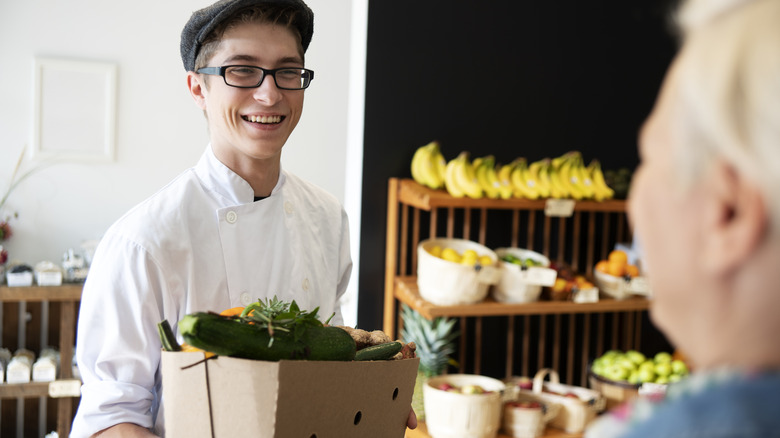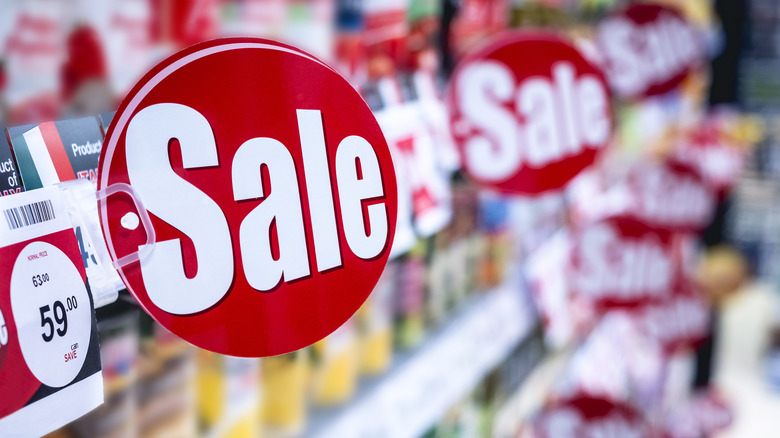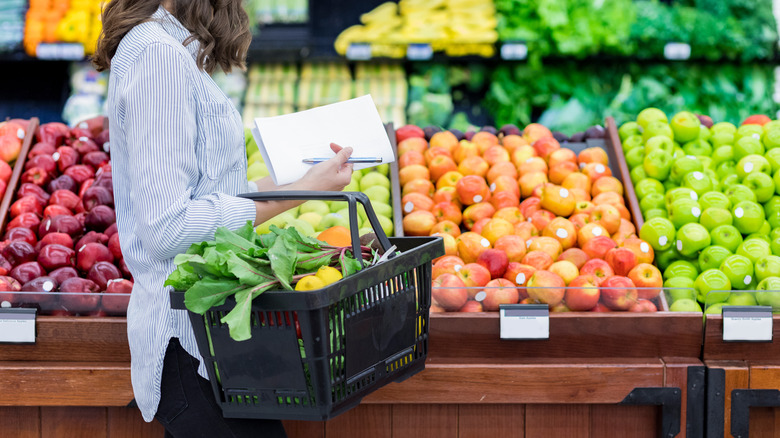The Grocery Store Section Chefs Always Hit First
According to an outlook from the USDA, food-at-home prices are predicted to increase 4.9% in 2023, coming off already record-high inflation in 2022. So, finding ways to save on groceries matters now more than ever. This might mean stocking up during special sales like Prime Day from Amazon Fresh, or strategically purchasing bulk items from warehouse stores like Costco.
While there are many tips and tricks to help save and keep on track with your food budget, it might also be a good idea to look to professional chefs for their grocery hacks as well. After all, chefs must work on a tight budget every day to do their job: The less money spent on ingredients means less on their bottom line and higher profits.
It turns out there is one section chefs always hit first when going to the grocery store: the clearance section. Even if they come in with a strict shopping list, taking advantage of any sales is one big way they save in the long run.
Stock up on staples when there are deals and sales
Stocking your pantry or your freezer with household stapes or family favorite ingredients is a good idea when there are special offers, deals, or sales. For example, James Beard Award semifinalist Chef David Bancroft told Food & Wine, "I always start very focused and with the right intentions when stepping through the automatic doors at a supermarket, but quickly veer off course to any BOGO deal they have to offer."
This might be canned goods with expiration dates far into the future, as well as shelf-stable dry goods that you can always have on hand to create meals in a pinch. You can even stock up on meat, chicken, or fish when there is a great deal to be had. Some stores will highly discount proteins when the "best by" date is near. If you look closely, the label often says use or freeze by a certain date, so you can still stock up here and store in your freezer until you are ready to cook them.
Savvy shoppers can also buy larger proteins on sale and portion them themselves at home. It's called "fabrication" in pro kitchens and means basically buying whole pigs, chickens, etc. and breaking them apart into individual portions. Here too you can also freeze certain sections for later.
Fresh produce can also be a clearance item
Shopping what's on clearance doesn't always mean sticking to non-perishable items or frozen foods. In fact, oftentimes the most beautiful, in-season produce is also heavily discounted when there is an abundance of it available. As private chef Christina Bailey told GOBankingRates.com, "Strawberries cost around $3 a pound, but during the winter and spring their price was double, at least." Atlanta based Chef Ron Hsu has a similar strategy, though he looks for produce toward the end of peak growing season when stores are trying to get rid of excess supply.
When cooking with fresh fruits and veggies, reducing waste will also save money on your bottom line. Sometimes this might mean shopping more frequently to make sure the produce actually gets used, rather than slipping it to the back of the crisper drawer. It's also a good idea to save scraps to use as building blocks for homemade vegetable stock. Even learning new skills like home canning and preserving is a budget-friendly way to enjoy peak season flavors any time of year.



